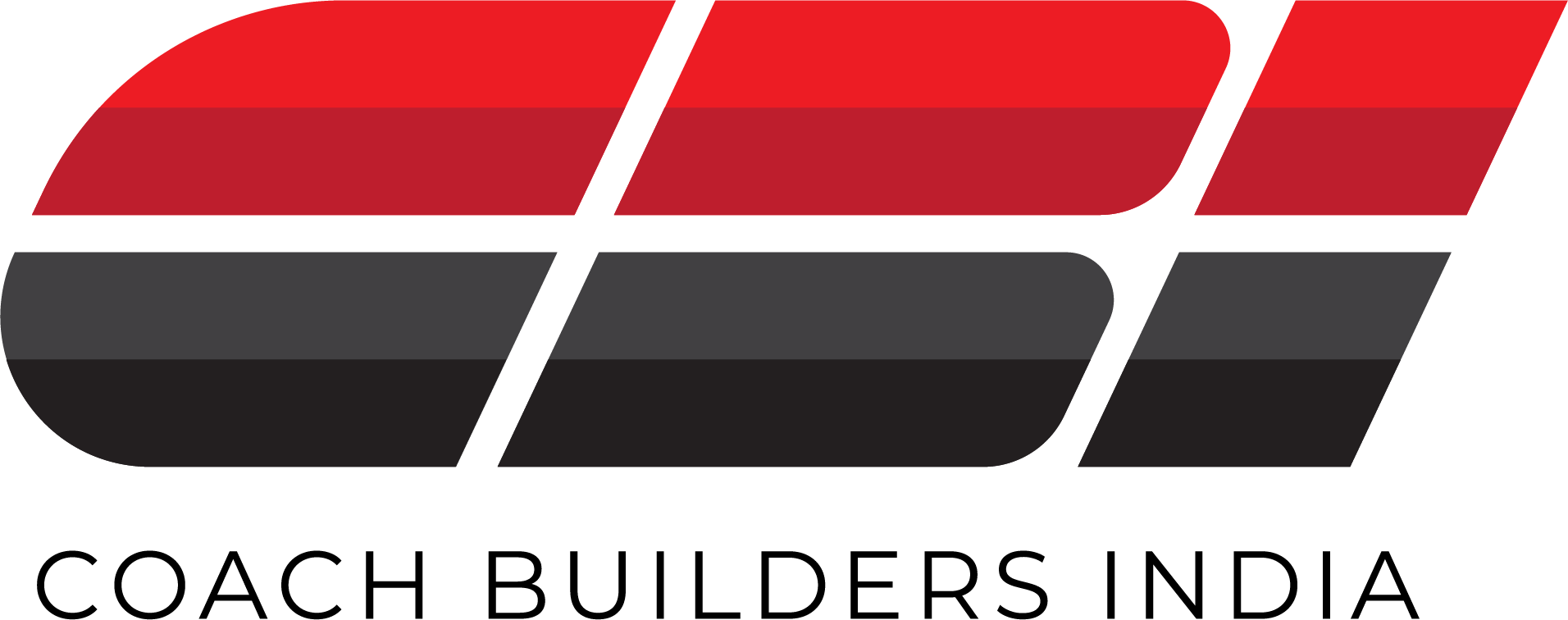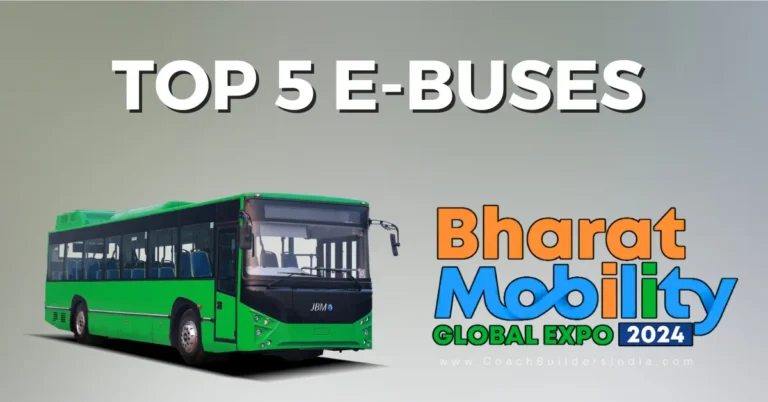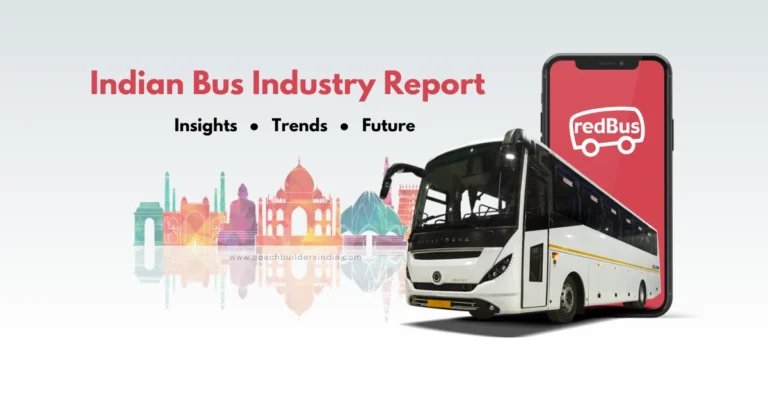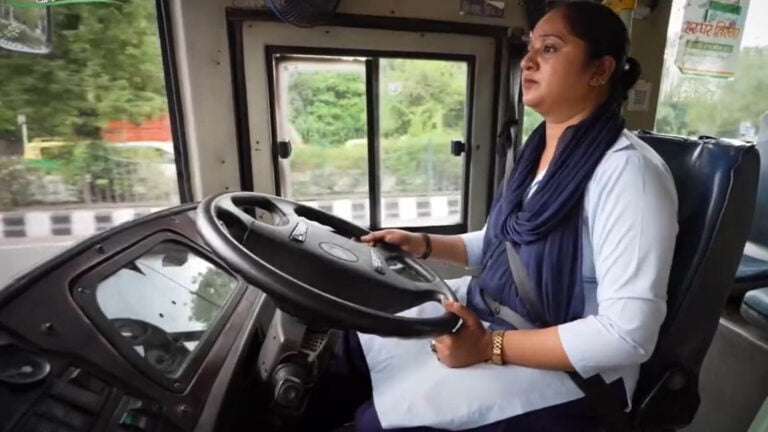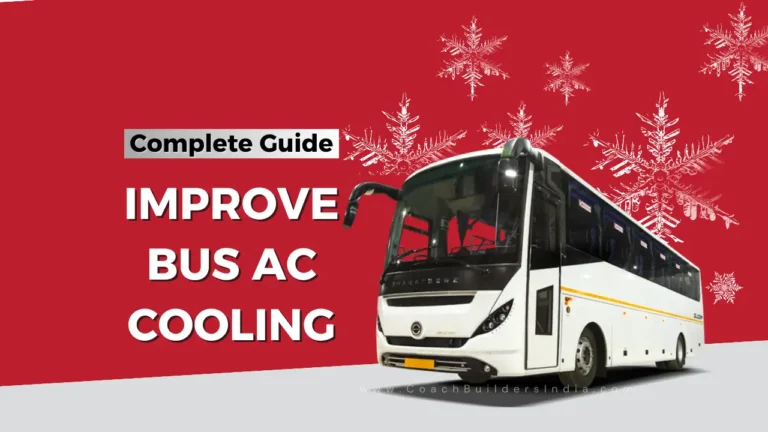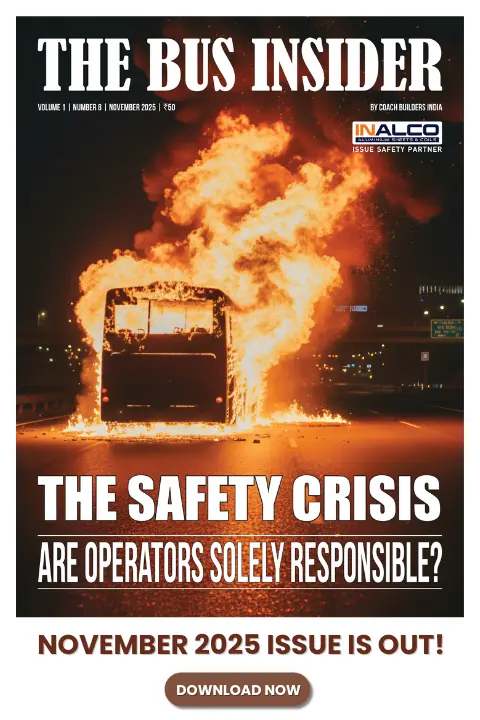AI in the Bus Industry: Transforming Public Transportation for a Safer, Smarter Future
AI in the bus industry is driving significant advancements in operational efficiency, safety, and service reliability through technologies like predictive maintenance, real-time tracking, and driver monitoring. As public and private operators embrace these innovations, AI is emerging as the backbone of a smarter, safer, and more efficient transit ecosystem.
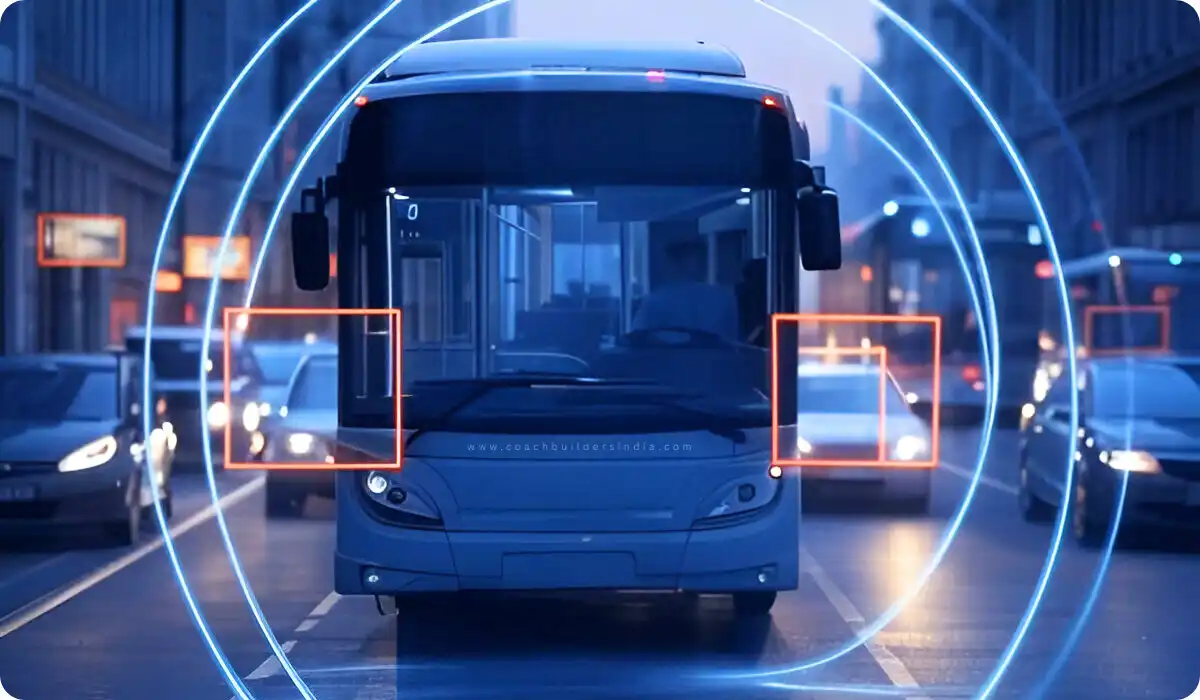
Artificial Intelligence (AI) is revolutionizing operations and service delivery across global public transport systems. The bus industry, in particular, is undergoing a technological transformation, with AI at the forefront of optimizing efficiency, ensuring safety, and enhancing the passenger experience.
In a country like India, where buses constitute the backbone of public mobility and serve millions of commuters daily, the application of AI presents vast opportunities.
From predictive maintenance and real-time scheduling to passenger-facing technologies, AI is influencing nearly every dimension of bus transportation.
Let’s take a look at the transformative role of AI in the bus industry, examining key innovations that are reshaping operations and passenger services with real-world examples from both global and Indian contexts.
SSI MantraM: How India’s First Telesurgery Bus is Revolutionizing Healthcare
Predictive Maintenance for Fleet Health
Traditionally, bus maintenance adhered to either reactive (post-failure repair) or preventive protocols. AI introduces a more advanced alternative: predictive maintenance.
By harnessing data from onboard sensors—monitoring engine temperature, vibration levels, oil pressure, and fuel consumption—AI algorithms can identify anomalies before they escalate into mechanical failures. This allows for proactive interventions, reducing vehicle downtime and optimizing fleet availability.
Example – Preteckt, i-Alert & Fleet Edge
Global platforms such as Preteckt claim to reduce breakdowns by up to 20% through real-time diagnostic insights. In India, OEMs like Ashok Leyland (i-Alert) and Tata Motors (Fleet Edge) have integrated predictive maintenance solutions within their commercial vehicle ecosystems, empowering operators with early warnings and actionable insights for improved vehicle lifecycle management.
Example – Arriva Czech Republic & Stratio
European operator Arriva Czech Republic has reported tangible benefits from adopting AI-based maintenance. After deploying Stratio’s Predictive Maintenance platform, the company saw a 13.5% increase in the mean time between failures, a 66% reduction in towing incidents, and achieved 2% net cost savings per kilometer annually.
Further validating this trend, an online survey by UITP (International Association of Public Transport) revealed that 1 in 3 public transport organizations globally are considering AI integration for critical applications, including predictive maintenance, as part of their future digital strategies.
Route Optimization and Scheduling
AI is streamlining route design and dynamic scheduling by processing vast data sets—traffic flow, passenger demand patterns, ridership peaks, weather conditions, and special events.
By leveraging historical and real-time data, AI enables route planners to allocate resources dynamically, reduce redundancy, and respond to live disruptions. This ensures better frequency management, reduced headways, and optimal fleet utilization.
Example – RTA Dubai, DTC Delhi & Chartered Speed
Dubai’s Roads and Transport Authority (RTA) implemented AI-powered route optimization, resulting in a 13.3% reduction in route inefficiencies within a single month.
In India, Delhi’s Transport Department collaborated with experts, including a research partnership with IIT Delhi, to plan routes for its “Mohalla” minibus initiative using AI-driven models based on granular mobility surveys.
However, with the minibuses not yet fully operational, the actual efficacy of AI integration remains to be evaluated.
On the private front, Gujarat-based Chartered Speed adopted AI-enabled scheduling platforms to manage its electric bus fleet, achieving better energy efficiency and operational control.
Fuel Efficiency and Emissions Reduction
AI in the bus industry also plays a significant role in promoting fuel efficiency and emissions reduction. By minimizing idling, optimizing trip distance, and refining driver behavior, AI contributes to lowering operational costs and environmental impact.
Through intelligent route management and real-time driver coaching, systems can ensure smoother acceleration, regulated speed profiles, and minimal abrupt braking—factors critical to sustainable bus operations.
Example – Volvo’s I-Coaching
Volvo’s connected fleet ecosystem features the I-Coaching tool, which delivers real-time feedback to drivers on driving parameters such as over-speeding, sharp turns, and gear usage. The platform has shown measurable results in enhancing fuel economy and reducing emissions.

Driver Monitoring and Advanced Safety Systems
Ensuring driver alertness is paramount for long-distance and intercity bus services. Driver alertness is critical in long-distance and intercity bus operations. To address this, AI in the bus industry is playing a pivotal role through the adoption of advanced Driver Monitoring Systems (DMS).
AI-based driver monitoring systems (DMS) use inward-facing cameras and behavioral analytics to detect signs of fatigue, distraction, or non-compliance with safety protocols.
These systems can identify micro-sleep, yawning, or gaze deviation and issue audible alerts, enhancing road safety and minimizing accident risks.
Example – KSRTC’s Safety Pilot in Karnataka
The Karnataka State Road Transport Corporation (KSRTC) deployed a pilot program utilizing AI-based DMS with dual cameras—one monitoring the driver and the other the road. The system automatically flagged fatigue indicators and alerted drivers in real time. Following a successful trial, KSRTC is expanding deployment across its long-haul routes.
Intelligent Enforcement and Traffic Prioritization
AI tools are increasingly being adopted for automated traffic enforcement and to support bus priority mechanisms in congested urban corridors.
Computer vision-enabled cameras, either vehicle-mounted or roadside, can identify traffic violations, such as lane obstruction or illegal parking, and facilitate the automated issuance of penalties, keeping bus rapid transit (BRT) corridors functional.
Example – Chicago & Maharashtra’s AI Initiatives
In Chicago, buses equipped with AI cameras detect unauthorized vehicles blocking dedicated lanes and generate citations in real time.
Maharashtra has utilized AI as part of the Intelligent Traffic Management System (ITMS). The state has installed advanced cameras that utilize radar technology to monitor traffic violations, and violators are issued electronic challans.
Sapience Automata Deploys ADAS Solutions on Dreamline’s Fleet
AI in The Bus Industry: Enhancing Commuter Experience
Beyond operational efficiency, AI is transforming the passenger interface by offering real-time information, seamless ticketing, dynamic fare structures, and elevated safety mechanisms.
1. Real-Time Bus Tracking and ETA Accuracy
Advanced vehicle tracking systems (VTS) powered by AI deliver accurate estimated time of arrival (ETA) updates and vehicle location data, crucial for commuter planning and safety.
Example – Chalo and State-Level Solutions
Chalo, a leading Indian startup in transit scheduling and digital ticketing, is one of the pioneers in adopting AI in the bus industry in India. The company utilizes AI to process GPS inputs and traffic feeds to provide real-time bus movement updates and reliable ETAs.
Chalo has consistently demonstrated high accuracy in predicting bus arrival times, showcasing the potential of AI in the bus industry to improve last-mile connectivity for urban commuters. State-level initiatives, such as One Delhi and BEST Mumbai, have integrated similar features to modernize public transport tracking systems.
2. Dynamic Pricing and Revenue Optimization
One of the most commonly used applications of AI in the bus industry is dynamic pricing, allowing real-time fare adjustments based on demand, competition, customer behavior, and market conditions.
These algorithms offer data-driven insights by continuously analyzing sales trends, competitor pricing, customer willingness to pay, and external factors like weather or events. This model enhances both revenue optimization and seat occupancy.
In India, companies like Sciative Solutions are pioneering AI-powered fare engines tailored for state transport undertakings (STUs) and private operators, bringing aviation-style yield management to the bus sector.
3. Surveillance, Safety, and Incident Response
AI in the bus industry is also revolutionizing security by employing advanced perceptive technologies to analyze video feeds in real time.
Utilizing machine learning and computer vision, these systems can process vast amounts of video data, detecting anomalies that may signal potential security threats. By distinguishing between normal and suspicious behaviors, AI enhances the effectiveness of surveillance operations, enabling prompt and appropriate responses to emerging threats.
Beyond detection, AI automates incident response by triggering alerts, notifying security personnel, and executing predefined protocols. This automation accelerates reaction times, reduces human error, and ensures that appropriate measures are taken swiftly to mitigate risks.
4. AI-Driven Customer Support Systems
AI-powered conversational interfaces like chatbots are increasingly used by transit authorities to provide real-time assistance, answer FAQs, and gather service feedback.
Example – Chicago Transit Authority
The Chicago Transit Authority launched Chat with CTA, a multilingual chatbot utilizing Google AI, enabling riders to access trip information and log service feedback. Such platforms offer scalable customer engagement and data-driven service improvements.
How the Scania Smart Dash is Revolutionizing Driving Experiences
The AI-Driven Shift is Already Here
AI is no longer a speculative technology within the bus industry—it is actively reshaping its future. From fleet health diagnostics and driver oversight to real-time journey planning and personalized commuter services, the scope of AI integration continues to expand.
For Indian transport operators, both public and private, the path forward lies in accelerated adoption. AI in the bus industry can significantly elevate operational resilience, passenger safety, cost efficiency, and service reliability—key pillars in modernizing India’s transit infrastructure.
The global benchmarks are in place. Now is the time for the Indian bus ecosystem to institutionalize AI as a core enabler of innovation and growth.
Catch the latest Bus Industry updates, Exclusive Interviews, Bus News, and International Bus News on Coach Builders India. Download the latest issue of the The Bus Insider magazine for more insights.
